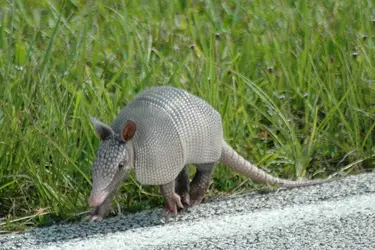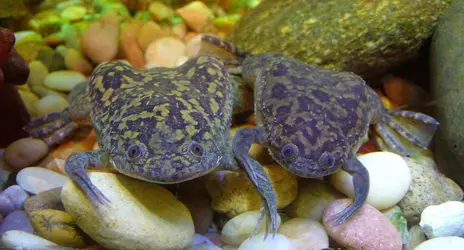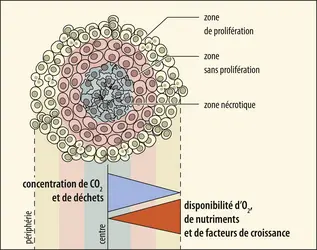ANIMAUX MODÈLES, biologie
Bibliographie
G. Altay, E. Batlle, V. Fernández-Majada & E. Martínez, « In vitro self-organized mouse small intestinal epithelial monolayer protocol, in Bio-protocol, vol. 10, no 3, 2020
G. Altay, E. Larrenaga, S. Tosi et al., « Self-organized intestinal epithelial monolayers in crypt and villus-like domains show effective barrier function », in Scientific Reports., vol. 9, no 10140, 2019
M. Armatte & A. Dahan dir., « Modèles et modélisations », in Revue d'histoire des sciences, no 57, pp. 243-432, 2004 ; « The Right organism for the job », in Journal of History of Biology, no 26, pp. 253-367, 1993 ; Model organisms, no special de The Scientist, 17 (suppl. 1), 2003
B. Artegiani & H. Clevers, « Use and application of 3D-organoid technology », in Human Molecular Genetics, vol. 27, R2, pp. 99-107, 2018
P. Bacot dir., L'Animal en politique, L'Harmattan, Paris, 2003
Y. E. Bar-Ephraim, K. Kretzschmar & H. Clevers, « Organoids in immunological research », in Natural Reviews Immunology, vol. 20, pp. 279-293, 2020
Cell Culture Dish, « A new dimension of cell culture : The rise of spheroid culture systems » (https://cellculturedish.com/cell-culture-spheroid-culture-systems/, 2019)
V. Chansigaud, Histoire de l'illustration naturaliste, Delachaux et Niestlé, Paris, 2010
X. Cui, Y. Hartanto & H. Zhang, « Advances in multicellular spheroids formation », in Journal of the Royal Society, Interface, vol. 14, no 127, 2017
J. H. Déchaux, « L’édition du génome, controverses », in Encyclopædia Universalis
J.-C. Dupont & S. Schmitt dir., Du feuillet au gène : une histoire de l'embryologie moderne, fin xviiie-xxe siècle, Éd. Rue d'Ulm, Paris, 2003
E. Fox Keller, « Models of and models for: theory and practices in contemporary biology », in Philosophy of science, no 67, 2000
G. Gachelin, « L’édition du génome, aspects méthodologiques », in Encyclopædia Universalis
G. Gachelin dir., Les Organismes modèles dans la recherche médicale, PUF, Paris, 2006
F. L. Holmes, « The Old Martyr of science : the frog in experimental physiology », in Journal of History of Biology, no 26, pp. 311-328, 1993
I. Löwy & J.-P. Gaudillière, « Disciplining cancer : mice and the practice of genetic purity », in J.-P. Gaudillière et I. Löwy dir., The Invisible Industrialist : Manufactures and the Production of Scientific Knowledge, Macmillan, Londres, 1998
M. MorangeHistoire de la biologie moléculaire, La Découverte, Paris 1994
P. Nouvel dir., Enquête sur le concept de modèle, PUF, 2002
S. E. Park, A. Georgescu & D. Huh, « Organoids-on-a-chip », in Science, vol. 364, no 6444, pp. 960-965, 2019
T.-E. Park, N. Mustafaoglu, A. Herland et al., « Hypoxia-enhanced blood-brain barrier chip recapitulates human barrier function and shuttling of drugs and antibodies », in Nature Communications, vol. 10, no 2621, 2019
H.-J. Rheinberger, Towards a Theory of Epistemic Things, Stanford University Press, Stanford, 1997
T. Sato, R. G. Vries, H. J. Snippert et al., « Single Lgr5 stem cells build crypt-villus structures in vitro without a mesenchymal niche », in Nature, vol. 459, no 7244, pp. 262-265, 2009
M. A. Schumacher, E. Aihara, R. Feng et al., « The use of murine-derived fundic organoids in studies of gastric physiology », in Journal of Physiology, vol. 593, pp. 1809-1827, 2015
Stemcell Technologies, « Air-liquid interface culture for respiratory research » (https://www.stemcell.com/air-liquid-interface-culture-respiratory-research-lp.html)
S. Upadhyay & L. Palmberg, « Air-liquid interface : Relevant in vitro models for investigating air pollutant-induced pulmonary toxicity », in Toxicological Sciences, vol. 164, no 1, pp. 21-30, 2018
Q. Wu, J. Liu,X. Wang et al., « Organ-on-a-chip : recent breakthroughs and future prospects », in Biomedical Engineering OnLine, vol. 19, no 9,[...]
La suite de cet article est accessible aux abonnés
- Des contenus variés, complets et fiables
- Accessible sur tous les écrans
- Pas de publicité
Déjà abonné ? Se connecter
Écrit par
- Gabriel GACHELIN : chercheur en histoire des sciences, université Paris VII-Denis-Diderot, ancien chef de service à l'Institut Pasteur
- Emmanuelle SIDOT : docteure, postdoctorante, Kennedy Institute, Oxford University, Oxford (Royaume-uni)
Classification
Pour citer cet article
Gabriel GACHELIN et Emmanuelle SIDOT. ANIMAUX MODÈLES, biologie [en ligne]. In Encyclopædia Universalis. Disponible sur : (consulté le )
Médias
Autres références
-
TÉRATOMES ET TÉRATOCARCINOMES
- Écrit par Gabriel GACHELIN
- 1 087 mots
- 1 média
...elles qui servent à construire des souris dans lesquelles tel gène a été inactivé avec une grande précision et non pas au hasard comme dans la mutagenèse. Ces souris sont d'importants modèles animaux de maladies humaines et de manière générale sont devenues des outils fondamentaux en biologie expérimentale....
Voir aussi
- MUCUS
- INTESTIN
- HÉRÉDITAIRES MALADIES ou MALADIES GÉNÉTIQUES
- ÉPITHÉLIUM
- CULTURES CELLULAIRES
- CELLULES SOUCHES
- PHYSIOLOGIE
- MICROFLUIDIQUE
- IMMUNITAIRE SYSTÈME
- INVALIDATION, génétique ou KNOCK-OUT
- GÉNOME
- RECHERCHE BIOMÉDICALE
- CHIMIOTHÉRAPIE ANTICANCÉREUSE
- MODÈLE, biologie
- MALADIE
- GRENOUILLES
- EXPÉRIMENTATION ANIMALE
- TECHNIQUES HISTOIRE DES, XXe et début du XXIe s.
- TRANSGENÈSE
- CYTOSQUELETTE
- ANIMAUX TRANSGÉNIQUES
- BIOLOGIE HISTOIRE DE LA





